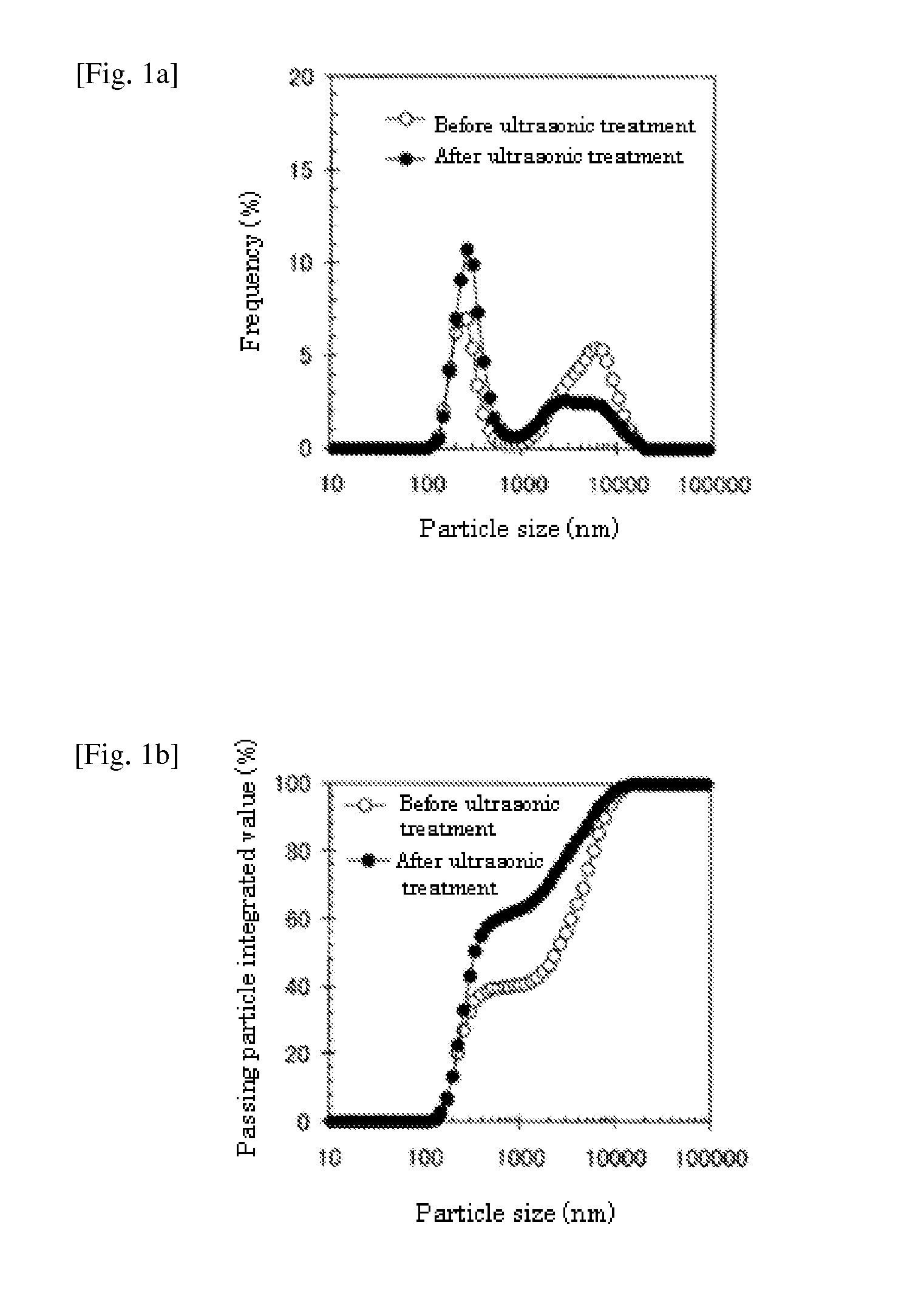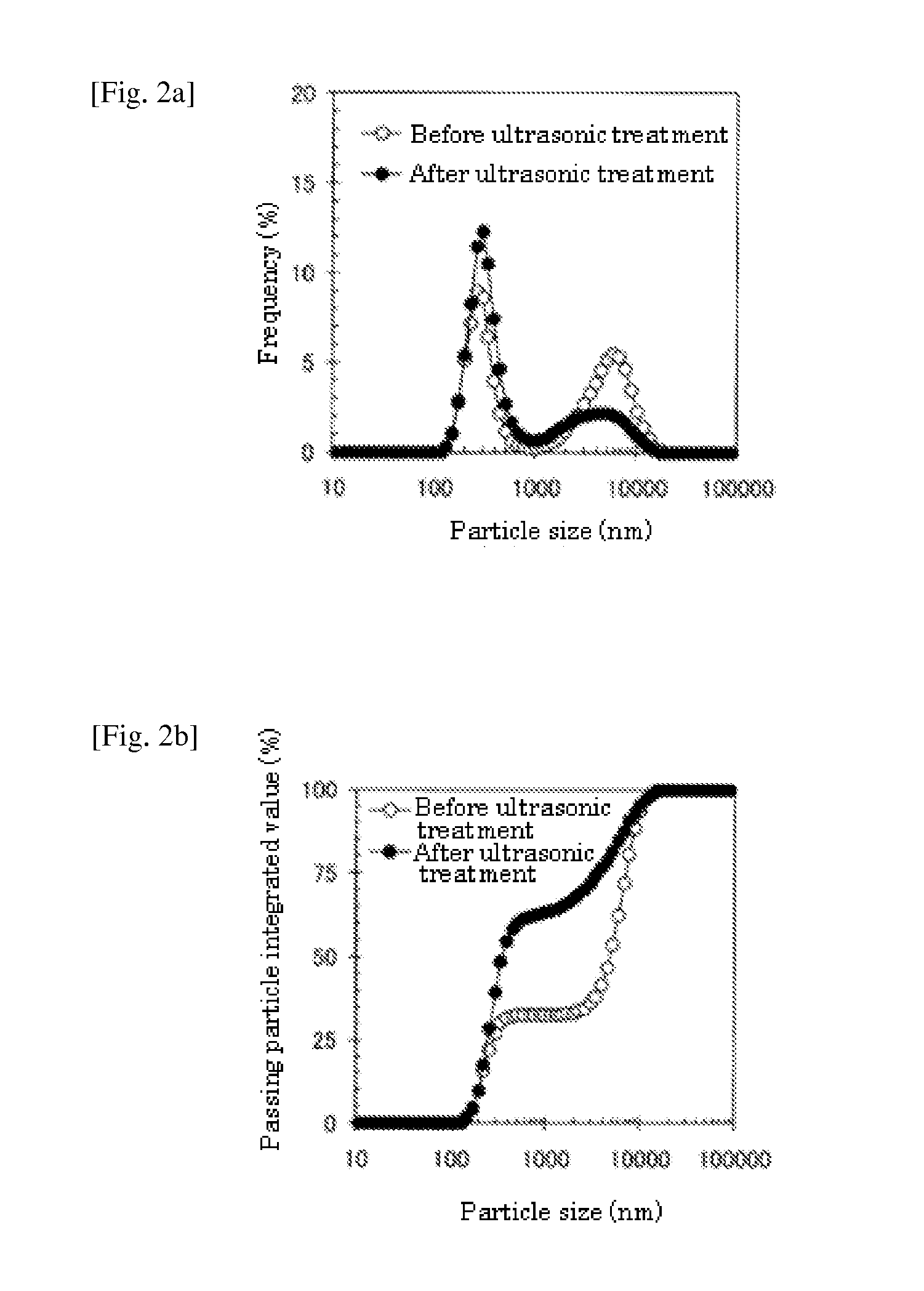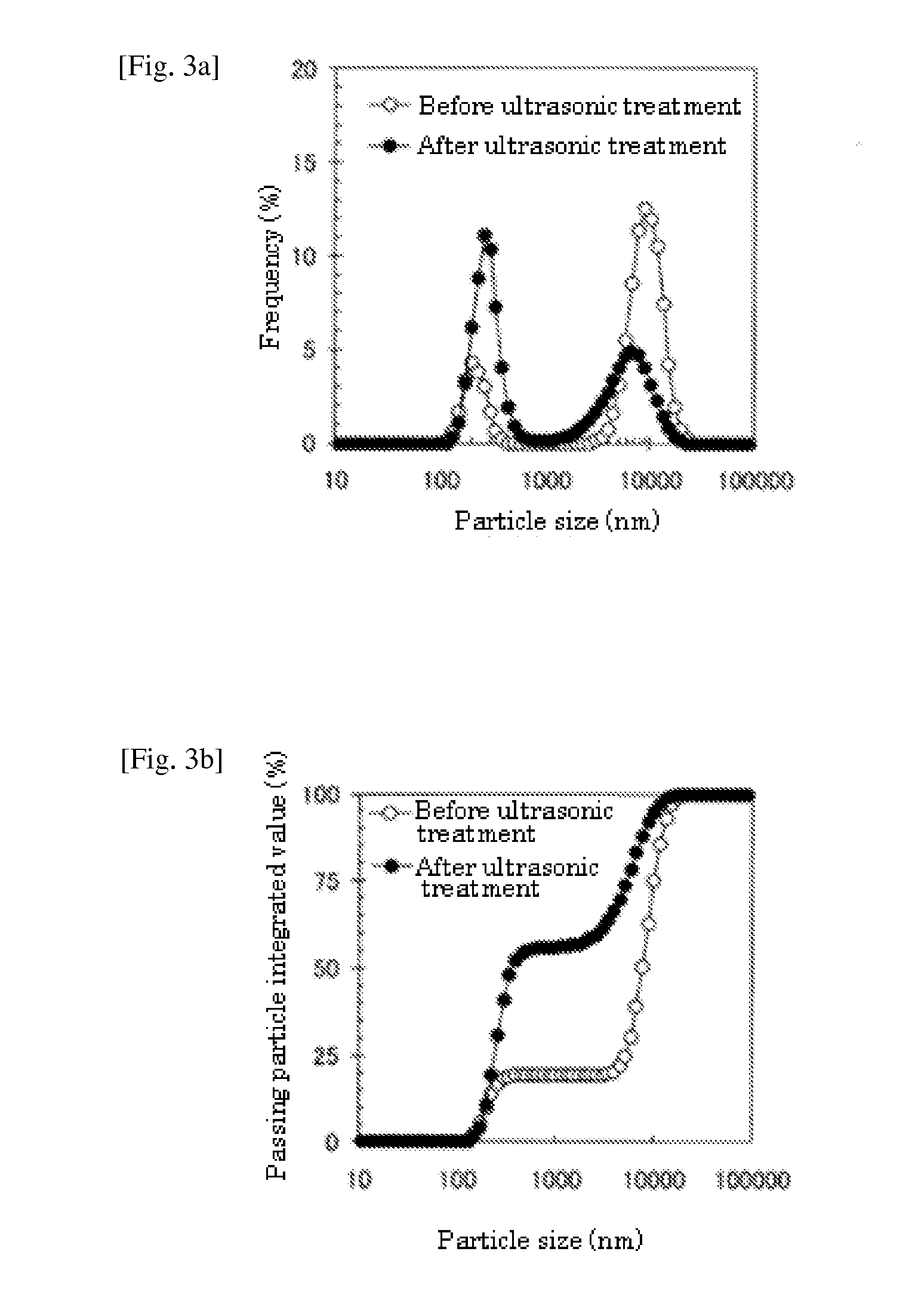Treatment method using liquid food composition
a technology of liquid food composition and treatment method, which is applied in the field of liquid food composition, can solve the problems of insufficient solution of measures, inability to adequately solve problems, and time and effort in preparation, and achieve the effects of stably maintaining the quality of the composition, avoiding time and effort for adding a gelling, and easy taking
- Summary
- Abstract
- Description
- Claims
- Application Information
AI Technical Summary
Benefits of technology
Problems solved by technology
Method used
Image
Examples
reference example 1
[0162]To 400 ml distilled water, 2.5 g of sodium alginate (KIMICA ALGIN IL-2: manufactured by KIMICA corporation) was added to prepare 0.5 wt % aqueous sodium alginate solution. Next, 1.15 g of calcium carbonate and 0.75 g of magnesium carbonate were mixed to the aqueous sodium alginate solution. The mixture was cooled to room temperature, and then added with distilled water to make the volume 500 ml. A soft bag (R1420H: manufactured by Meiwa Pax Co., Ltd.) was filled with 200 g of the prepared liquid food composition, and the whole was sterilized (121° C., 20 minutes) in an autoclave sterilizer.
[0163]The prepared product was liquid and had a pH of 9.9 and a viscosity of 10 cP. Ascertaining the semi-solidification in an acidic condition, the prepared product was semi-solidified in an artificial gastric juice and gave a solid residue on a nylon screen. Even after standing storage (25° C.) for a month, the prepared product was not changed in the pH and viscosity and also in the degree...
example 1
[0165]Based on the formulation described in Table 1, a liquid food composition containing 0.5 wt % sodium alginate was prepared.
TABLE 1Amount addedExampleComparativeComparativeComponent1Example 1Example 2Sodium alginate0.5g0.5g0.5gDextrin12.5g12.2g12.2gSoybean protein4.3g4.3g—Sodium casemate——4.3gFat (including3.4g3.4g3.4gemulsifier)Calcium carbonate230mg—230mgCalcium dihydrogen—580mg—phosphateMagnesium carbonate150mg—150mgMagnesium sulfate—420mg—Other minerals1330mg1330mg1330mgVitamins62mg62mg62mgDistilled waterBalanceBalanceBalanceTotal100ml100ml100mlpH6.7—6.8Viscosity110—110Generation frequencyNoneGelatedNoneof solidOccurrence degree ofA / **)Bcomponent separation*)*)A: Component separation was not occurred B: Component separation was occurred**)Evaluation was impossible due to gelation
[0166]To 650 ml of distilled water, 5 g of sodium alginate was added. Next, a dextrin powder and a soybean protein powder (manufactured by Fuji Oil Co., Ltd.) were added. A fat (containing an emulsif...
example 2
[0182]In a similar manner to that in Example 1, liquid food compositions (1) without sodium alginate, (2) containing 0.3 wt % sodium alginate, (3) containing 0.5 wt % sodium alginate, (4) containing 1.0 wt % sodium alginate, and (5) containing 1.5 wt % sodium alginate were prepared. The sodium alginates used were “KIMICAALGIN IL-2: manufactured by KIMICA corporation” in (2) to (4) and “KIMICAALGIN IL-1: manufactured by KIMICA corporation” in (5), while the protein source used was a soybean protein.
TABLE 2Concentration(1)(2)(3)(4)(5)of sodiumWithout0.3 wt %0.5 wt %1.0 wt %1.5 wt %alginateadditionIL2IL2IL2IL1pH6.86.86.77.37.3Viscosity3580110195190Degree ofCBAAAsemi-solid-ification*)*)C: Not semi-solidified B: A semi-solidified product was observed on a nylon screen. A: Most was semi-solidified to give a residue on a nylon screen.
[0183]Each food composition obtained was liquid.
[0184]Ascertaining the semi-solidification in an acidic condition, (1) the composition without sodium alginate...
PUM
| Property | Measurement | Unit |
|---|---|---|
| viscosity | aaaaa | aaaaa |
| particle size | aaaaa | aaaaa |
| particle size | aaaaa | aaaaa |
Abstract
Description
Claims
Application Information
 Login to View More
Login to View More - Generate Ideas
- Intellectual Property
- Life Sciences
- Materials
- Tech Scout
- Unparalleled Data Quality
- Higher Quality Content
- 60% Fewer Hallucinations
Browse by: Latest US Patents, China's latest patents, Technical Efficacy Thesaurus, Application Domain, Technology Topic, Popular Technical Reports.
© 2025 PatSnap. All rights reserved.Legal|Privacy policy|Modern Slavery Act Transparency Statement|Sitemap|About US| Contact US: help@patsnap.com



